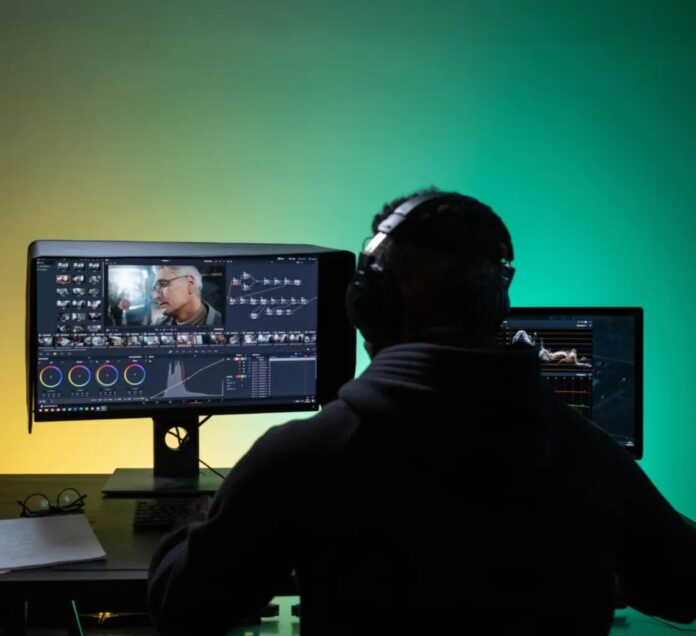Audio alone often struggles to gain traction online. Social platforms reward visual content, and videos outperform audio clips in both reach and engagement. Converting audio into shareable videos has become a practical path for creators, educators, and businesses that want more visibility.
With AI, the process no longer demands technical editing skills or large budgets. Instead, it offers accessible, streamlined tools that take audio files and turn them into engaging video formats suitable for TikTok, YouTube, or Instagram.
Why video formats boost audio reach

A podcast episode uploaded as an audio-only file may receive limited interaction. The same clip, paired with visuals, can increase retention by nearly 80% according to research from HubSpot.
Viewers connect with graphics, captions, and dynamic movement far more than with static sound. AI bridges the gap, helping creators add subtitles, animations, and even context-based images automatically.
- Short clips attract attention faster than full-length episodes.
- On average, 85% of Facebook users watch videos without sound, so subtitles matter.
- Content with motion graphics receives up to 48% more shares compared to plain audio.
The demand for video makes the case clear: audio must adapt into formats that thrive on platforms driven by visuals.
Tools that simplify conversion for beginners
For many, the hurdle lies in learning traditional editing software. AI-driven converters solve that problem by automating most of the process. Instead of dragging files across timelines, creators upload audio and let the system generate visuals, captions, and templates.
A platform like Vexub shows how accessible the process can be. It allows users to pair recordings with customizable video templates, making content look polished without hours of editing.
This approach helps podcasters, marketers, and educators reach audiences on YouTube Shorts or TikTok without outsourcing expensive production.
The result is not only saved time but also a consistent flow of content. Regular uploads keep algorithms favorable, and AI-driven batch conversions help maintain that rhythm.
Adding subtitles and captions for silent viewers

One of the most overlooked elements is captioning. With so many users consuming content in silence, captions turn an otherwise skipped clip into a watchable one.
AI models can transcribe speech with accuracy rates above 90%, depending on audio quality. The subtitles are then automatically synced, cutting down on manual work.
Captions do more than improve accessibility. They improve SEO within platforms, as text-based content gets indexed.
That means search engines can associate video clips with more keywords, driving additional visibility. Creators can tweak transcripts to highlight certain phrases, ensuring both clarity and discoverability.
Visual layers that give audio context
Audio by itself struggles to hold attention, but visuals anchor the message. AI software can generate moving backgrounds, waveform animations, or image slides that match the topic of the audio.
A marketing tip can appear with animated charts, while a meditation guide can unfold against calming visuals.
This alignment between sound and sight creates immersion. According to Wyzowl’s video marketing survey, 88% of consumers are more likely to engage when audio is supported with visual cues.
That means a creator who pairs audio with well-matched imagery gains a stronger chance of keeping viewers until the end of the clip.
Formats best suited for each platform
Not all social platforms respond to video in the same way. A strategy that works on TikTok may not fit YouTube or LinkedIn. AI-driven tools simplify resizing and formatting, so one audio clip can live across multiple platforms.
| Platform | Best Video Length | Ideal Format | Key Benefit |
| TikTok | 15–60 seconds | Vertical (9:16) | Fast viral reach |
| Instagram Reels | 30–90 seconds | Vertical (9:16) | Strong discovery feed |
| YouTube Shorts | Up to 60 seconds | Vertical (9:16) | Boosts subscriptions |
| 60–120 seconds | Horizontal (16:9) | Professional appeal |
By adjusting the same piece of audio across these formats, creators maximize return without recording extra material.
AI tools often include one-click exports for each platform, avoiding the frustration of manual resizing.
AI personalization for stronger audience connection

Generic content rarely builds loyalty. AI can analyze tone, pacing, and keywords within the audio and then recommend visual styles that fit.
For example, a business podcast might receive templates with corporate branding, while a comedy clip might get bold colors and playful animations.
Personalization matters because audiences expect relevance. Sprout Social found that 72% of users only engage with content that feels tailored to them. When creators use AI tools to match visuals with their niche, they increase the likelihood of higher watch times and shares.
Batch production for content consistency
One of the biggest struggles creators face is keeping up with content schedules. AI helps by allowing multiple audio clips to be converted in batches. Instead of editing one video at a time, users can process an entire podcast season into short-form videos within hours.
Content consistency drives platform growth. YouTube’s algorithm, for example, favors channels that upload frequently and keep viewers engaged for longer periods.
By leveraging AI batch processing, creators can plan weeks of content in advance without burning out.
When audio quality impacts the final product
No AI tool can fully cover poor audio. Background noise, distortion, or low volume still degrade video appeal.
A clean recording ensures AI transcription works accurately and visuals align with clarity. Investing in a reliable microphone pays off long-term because better input translates to more professional-looking outputs.
Some AI platforms even offer built-in audio cleaning before video creation. Features like noise reduction, equalization, and volume leveling help smooth out imperfections, making the final video sound polished.
Since 60% of viewers will abandon a video with bad audio, attention to input quality remains crucial.
Practical tips for creators starting now

Moving from audio to video requires more than software – it requires small, smart adjustments in workflow.
- Record audio in segments that can easily become short clips.
- Always export captions and tweak them for clarity before publishing.
- Use AI templates but customize colors, logos, and fonts for branding.
- Test engagement metrics on different platforms to refine strategy.
- Recycle older audio content into new video formats to extend its lifespan.
Every clip created builds a library of assets that can be reused, repurposed, or remixed into new campaigns.
Final thoughts on AI-powered conversions
Turning audio into video no longer requires advanced editing expertise. With AI, creators have access to a toolkit that blends automation with creativity. The outcome is more shareable content, higher engagement, and stronger audience growth.
For podcasters, educators, or businesses, the opportunity lies not just in repurposing old recordings but in setting up a future-proof workflow. By adopting AI tools, audio content gains new value, reaching wider audiences who scroll past sound-only media. Those who adapt early gain a decisive edge in a competitive content landscape.







